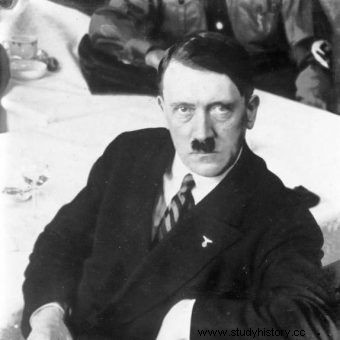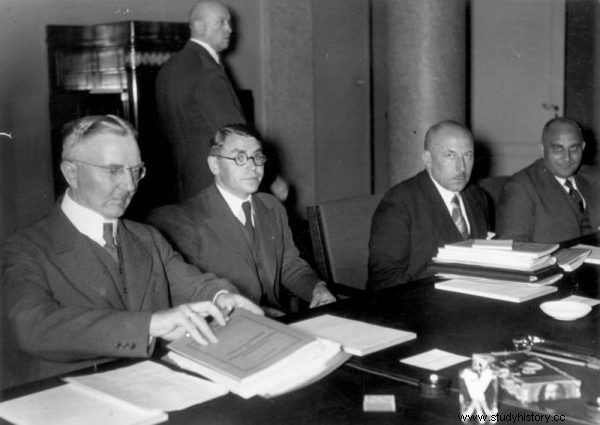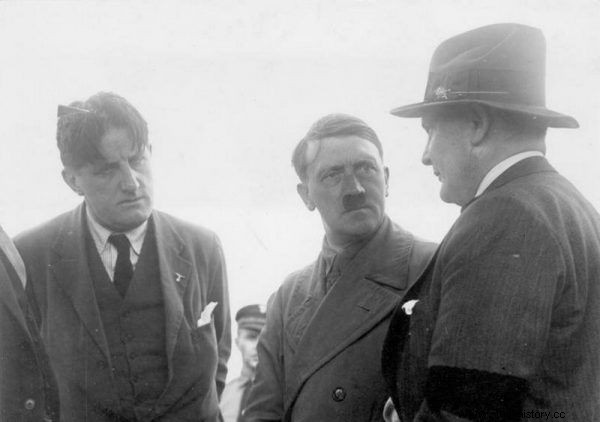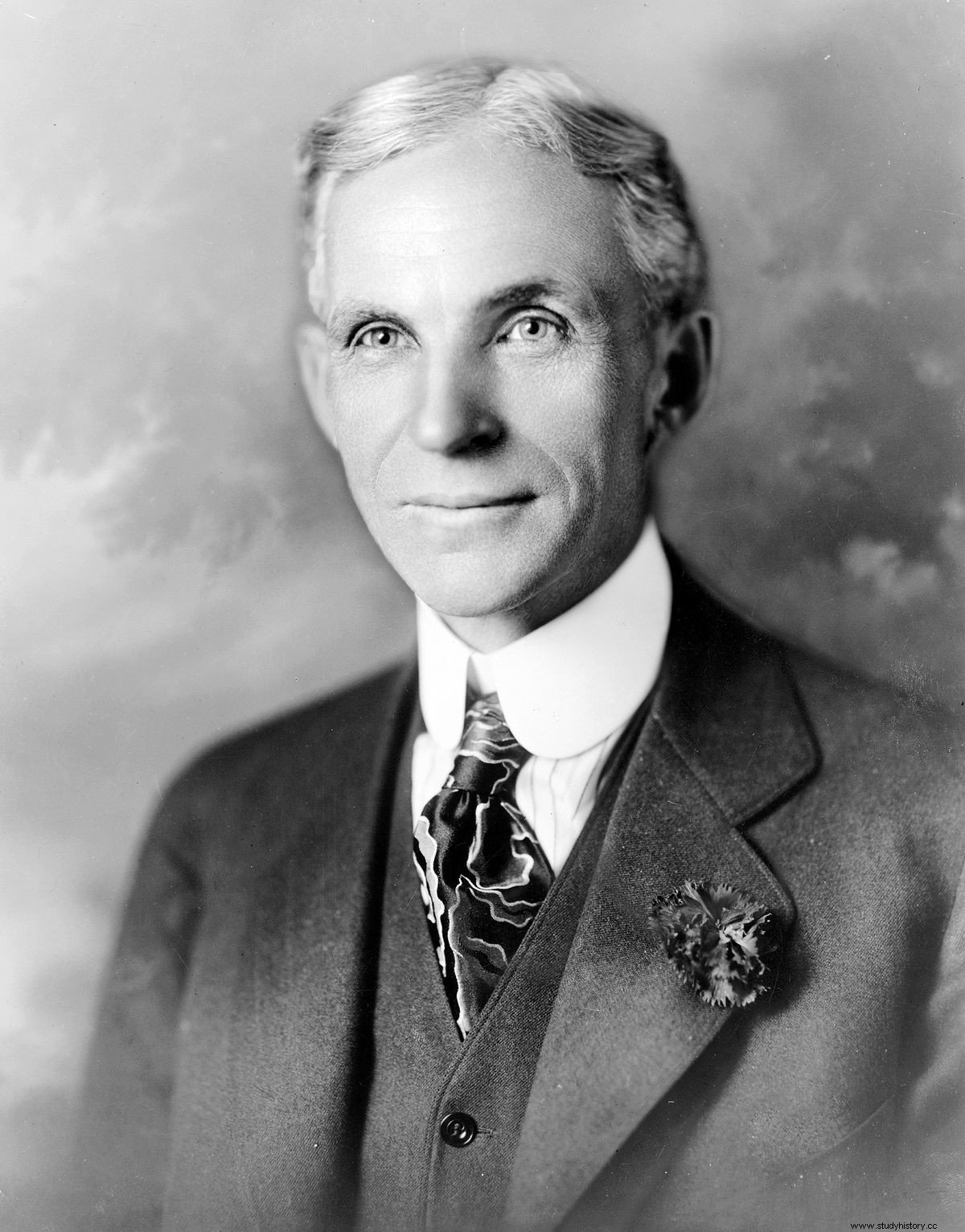The Nazis would not have won the elections without the help of great German capital. In the key period from the fall of 1932 to the spring of 1933, the companies paid the NSDAP tens of millions of reichsmark. Who Really Made Hitler? And have there ever been consequences for these companies?
Before the elections on March 5, 1933, the National Socialist campaign was sponsored by German industrialists on an unprecedented scale. They chose Adolf Hitler, tempted by the prospect of lucrative contracts. They believed that the Nazis would defend them against the communists whose ratings soared during the Great Depression of 1929-1933. They needed someone who would not allow communism to be introduced in Germany following the example of Soviet Russia.
Pay or there will be slaughter!
On February 11, 1933, the newly minted Chancellor Hitler opened the international motor show in Berlin. He presented an ambitious road construction program and tax breaks for car manufacturers. Nine days later, at a meeting with representatives of the largest concerns, he stated that democracy in the form of the Weimar Republic is contrary to the interests of business and the growing Marxism must be crushed.

Who really financed Hitler's election success?
As soon as he left the meeting, Hjalmar Schacht, a well-known financier with broad political connections, announced a fundraiser for the Nazi government election fund.
As the British historian from Cambridge, Professor Richard J. Evans, author of the book Advent of the Third Reich writes . Schacht demanded three million reichsmark from the industrialists. Everyone paid without a murmur, thanks to which, just before the decisive March elections to the Reichstag, Joseph Goebbels could finance the campaign in a truly American style. He introduced the Führer as a Germanic messiah and used the radio which was the best tool to reach the masses of the electorate.

Hjalmar Schacht (first from the left) had extensive contacts among German and international entrepreneurs. They were invaluable to Hitler.
Both Professor Evans and the German historian Götz Aly, author of Hitler's State, argue that the German industrialists' contribution to Hitler's party was not due to ideological reasons, but was merely a ploy to protect their own interests. Just in case, throughout the 1920s, 30s and 40s of the 20th century, businessmen from the Reich transferred enormous capital abroad anyway.
First sponsors of a Linz painter
In the 1930s, Hitler no longer complained about the lack of sponsors, but a decade earlier things were different. Sometimes there was not enough money to quench the thirst after another fiery speech in the Munich beer hall. According to Professor Richard J. Evans, author of "The Advent of the Third Reich" Until the end of the 1920s, the NSDAP lived mainly from membership fees, tickets to meetings with the Führer and income generated by the party press, as well as robbing political rivals and extorting donations from small companies.
In the early 1920s, one of the first protectors of the future Nazi leader was the far-right writer and theater director Dietrich Eckart , participant in the Munich coup of November 1923. It was he who was supposed to notice the potential of a World War I corporal and an unfulfilled painter from Austrian Linz. He bought Hitler decent clothes and brought him to the showrooms in Munich.
Another intermediary between big business and the Nazis was a Harvard University graduate, Ernst "Putzi" Hanfstaengl , a half-American with a wealth of art dealers and publishers. "Putzi" (German:cute, baby, cuddly) was in fact a double agent, working for both Hitler and the USA. In the 1920s, he introduced the rising NSDAP star to influential Munich creammen, publishers, entrepreneurs and officers.
Initially, Hitler was regarded in those circles as a semi-operetta character. Especially when he appeared scowling at elegant parties, dressed in a military jacket with a riding crop in his hand. But then there were already wealthy Germans willing to guarantee Adolf's loans. For example, Helene Bechstein, wife of piano maker Edwin Bechstein did. She called Hitler "the wolf" and said he could be her son. The first business shark, Fritz Thyssen, a steel magnate, also joined the ranks of Hitler's regular sponsors quite early.

"Putzi" (left) was responsible for Adolf Hitler's contacts with foreign media.
Meanwhile, "Putzi" was responsible for the future Fuhrer's contacts with foreign media. He sold to the American press magnate William Randolph Hearst three articles (1,000 reichsmark each, about 10,000 euros today) in which Hitler outlined the goals and methods of the NSDAP. Hearst's money made it possible to use the representative Hotel Kaiserhof in the center of Berlin as the headquarters of the NSDAP in the German capital.
A friend of Mr. Ford
Hanfstaengl left Germany in 1937, or actually fled fearing some people from Hitler's circle. For several years he spied on the Nazis for the needs of the Americans and the British, and acted as an intermediary in foreign financing of the NSDAP. The twelfth chancellor of the Weimar Republic (in the crisis years 1930-1932) Heinrich Brüning of the Catholic Center Party wrote in his memoirs that since 1923. Hitler received large sums from abroad. They were to pass through Swiss and Swedish banks.
Perhaps some clue in this matter is Hitler's meeting with the American military attaché, Capt. Truman Smith, which happened in 1922 in Munich. Of course, the US intelligence officer was not the only American supporter of Hitler. Another, much better known, turned out to be Henry Ford. The industrialist, the founder of the Ford Motor Company and the father of mass production, and an outspoken anti-Semite, gave the NSDAP leader a true adoration.

Henry Ford truly adored Hitler.
In 1938, for his services to the Third Reich, Hitler honored Ford with the Grand Cross of the Order of the German Eagle, the highest award granted to foreigners. In turn, the American admired the Führer so much that he used to send him checks for 50,000-100,000 for his birthday. reichsmark. The friendship of the two men lasted for many years, even when the world already knew about the Holocaust.
Concern Ford Motor Company built factories in Berlin and Cologne and provided the NSDAP purse with large donations. But American money did not flow only in this way to the accounts of the Nazis. For example, IG Farben financed almost half of the costs of the NSDAP parliamentary campaign in 1930. The concern was formed five years earlier from the merger (thanks to Rockefeller dollars) of six largest German chemical companies. In the future, it became a key element of the German war machine (it produced, among others, Zyklon B used in the gas chambers of extermination camps).
In the 1920s, huge amounts of money were borrowed by Krupp's steel plants overseas, and American companies were setting up enterprises in Germany. Belongs to the DuPont family General Motors in turn bought the Opel plant in Rüsselsheim near Frankfurt am Main, and J.P. Morgan he controlled the German radio and electrical industry (AEG and Siemens). A few years later, all these companies contributed to Hitler's election budget. And they helped him secure the victory that would determine the fate of Europe.
